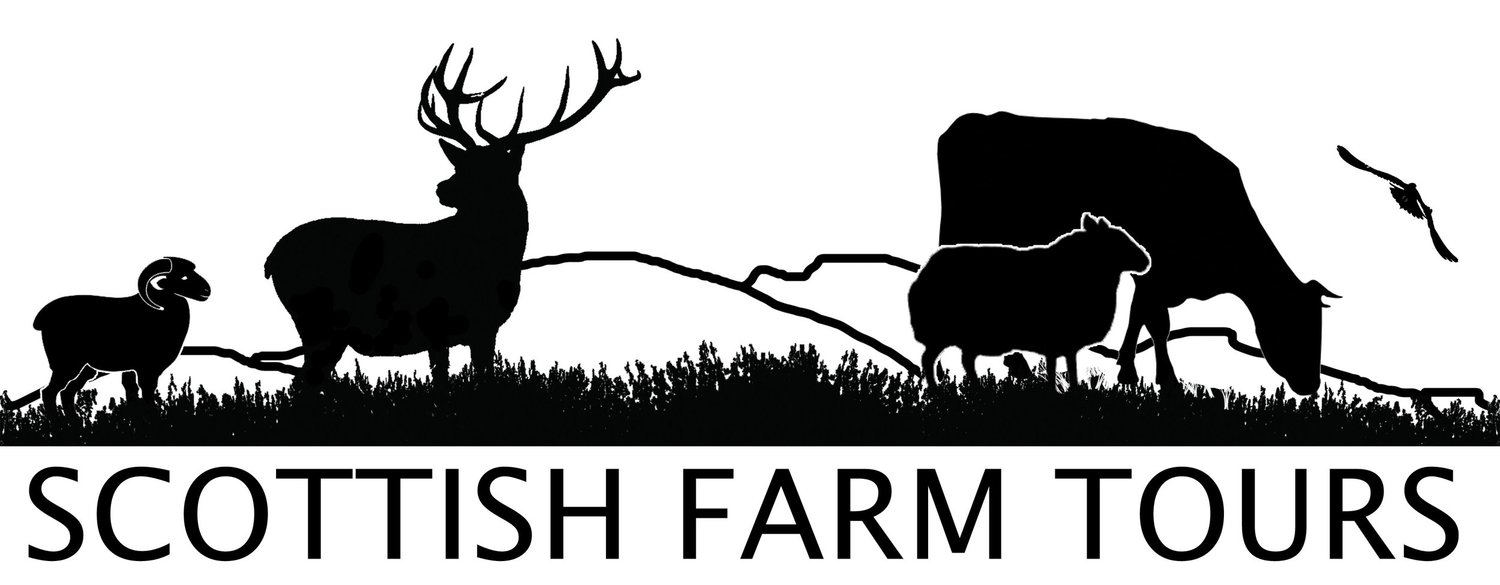April and May are the busiest months of the year at Ruthven. From the middle of April till the middle of May, 1200 lambs were born! 600 Blackface ewes lambed out in the fields, producing mainly Scotch Mule lambs (Scottish Blackface mother and Bluefaced Leicester father), and a few pure Blackface lambs as flock replacements. 70 cheviots and Shetland-cheviot crosses lambed outside as well producing cheviot lambs, and some pure Shetland ewes had cheviot cross lambs which were soon nearly as big as themselves!
Blackface ewe with mule lambs, this one had triplets!
Cheviot ewe and lambs
150 mules lambed in the sheds, producing Suffolk-cross lambs. These are lambed inside as they tend to have more multiple births, and bigger lambs so are more likely to need attention. They are turned out with their lambs usually 24 hours after lambing, weather permitting. Also in the sheds at that time were any ewes expecting triplets. This year there were 74 of them! But we don’t often let a ewe rear all 3 lambs – it is really too much to ask of most sheep, so in most cases we try to take the third lamb and foster it onto a ewe who has only a single lamb. If you do this as the foster mother is giving birth, the results are really successful – she goes away happy that she has just had 2 lambs and the other ewe is turned out to grass with her two remaining lambs. This vastly reduces the number of lambs in the bottle rearing pen.
A successful fostering - mule ewe, right hand lamb is her own suffolk cross lamb, left hand lamb is a mule lamb out of a blackface ewe.
Cheeky!
Pens of ewes expecting triplets
All the male lambs will be fattened on farm on grass (and turnips for the slower to mature ones) and sold for meat from July onwards. The mule ewe lambs are sold in September through the market at Huntly, destined for breeding flocks on lower ground. We keep 40 of these each year as replacements for our own small flock of mules. The best of the Suffolk cross ewe lambs will be sold for breeding, and the rest will be fattened along with the males.
As well as the commercial flock of course we have several different breeds, some of which we lamb early in February, to allow the lambs a chance to grow before the summer shows, and to enable us to give these sheep more individual attention. So in the fields can also be seen Ryeland, Icelandic and Bluefaced Leicester lambs.
Icelandic ewe and lamb
Icelandic tup lamb
Ryelands
So a frantic time of year but also one of the most enjoyable. By the end of May, all the ewes have lambed, lambs are dosed and vaccinated, and the fields are looking full. The next big job to look forward to will be shearing, as the weather warms up and the fleeces begin to lift. And of course the show season, starting with our first try showing at the Royal Highland Show – we will be there with Mules and Ryelands.
Even through the busy times, we still snatch moments to appreciate the wildlife around us on the farm. At the start of May we managed to catch a photo of an osprey, visiting one of our ponds. This year the lapwings, with their distinctive call, were much slower to arrive than usual, but eventually the numbers did increase, and now some have successfully hatched chicks. Oystercatchers and curlews are here in good numbers, and the skylark can be heard every day singing their hearts out above the hill.
Osprey visiting
Skylark
The hedges that we planted in 2010 are looking fantastic, providing great habitat for wildlife, crab apples blackthorn and hawthorn have a tremendous display of flowers, and so hopefully a good supply of food for birds later on.
Crab apple in flower
Lesley











